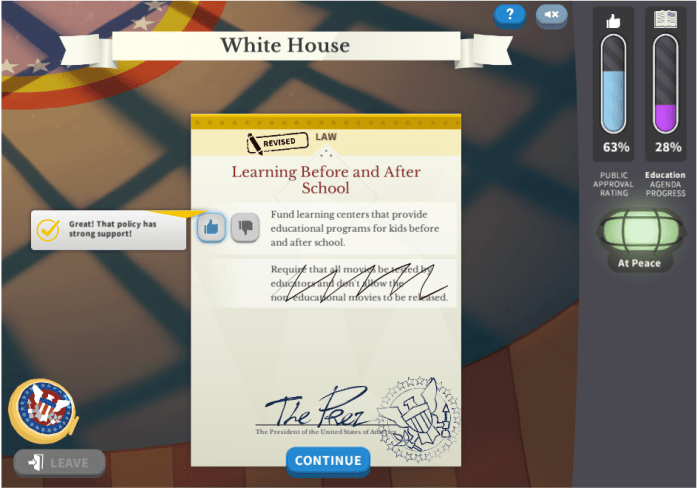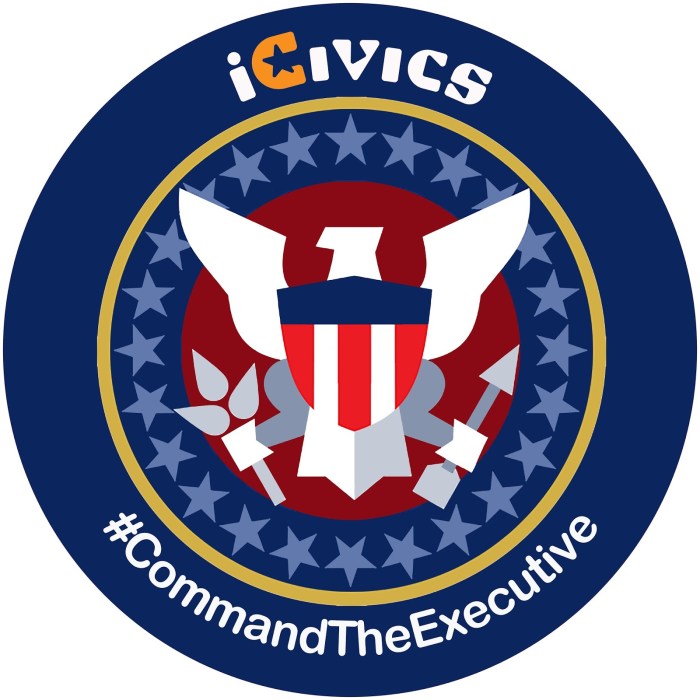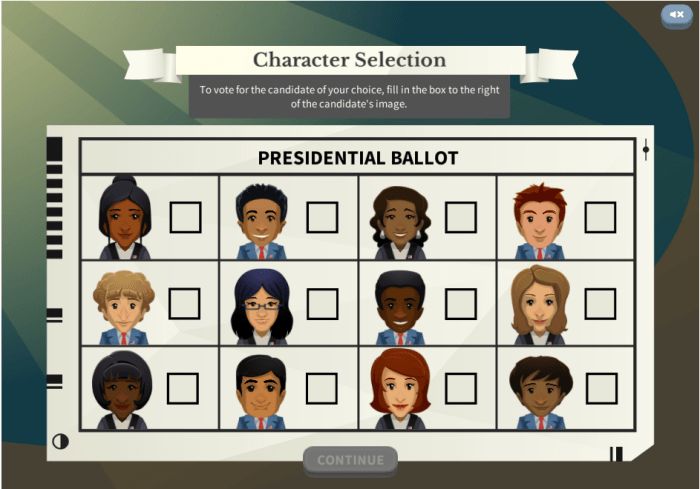The ICivics Executive Command Answer Key unlocks the intricacies of executive leadership, providing a comprehensive guide to the hierarchical structure, roles, responsibilities, and challenges faced by executives in the iCivics simulation. This meticulously crafted key empowers users with the knowledge and understanding necessary to navigate the complexities of executive decision-making, policy implementation, and effective leadership.
Delving into the core functions of the Executive, the answer key elucidates the processes of planning, organizing, and directing operations. It explores the Executive’s pivotal role in coordinating with other branches of government and highlights the significance of effective communication and leadership in overcoming obstacles.
Executive Structure

The Executive of iCivics is structured hierarchically, with the Executive Director at the helm, followed by the Deputy Executive Director, and then the various department heads.
The Executive Director is responsible for the overall leadership and management of iCivics, including setting the strategic direction, overseeing the budget, and ensuring the organization’s mission is fulfilled. The Deputy Executive Director supports the Executive Director and assumes their responsibilities in their absence.
Department Heads
The department heads are responsible for leading their respective departments and ensuring that the organization’s goals are met. The department heads report directly to the Executive Director and Deputy Executive Director.
- Chief Operating Officer:Responsible for the day-to-day operations of iCivics, including finance, human resources, and technology.
- Chief Program Officer:Responsible for the development and implementation of iCivics’ educational programs.
- Chief Development Officer:Responsible for fundraising and donor relations.
- Chief Marketing Officer:Responsible for marketing and communications.
Executive Functions

The Executive is responsible for planning, organizing, and directing the operations of an organization. It is the highest level of management and is responsible for making decisions and setting policies that guide the organization.
The Executive coordinates with other branches of government to ensure that the organization’s goals are aligned with the overall goals of the government. It also works with other organizations to build partnerships and alliances that can help the organization achieve its goals.
Decision-Making and Policy Implementation, Icivics executive command answer key
The Executive is responsible for making decisions and implementing policies that affect the organization. These decisions may be related to the organization’s mission, goals, strategies, or operations. The Executive must consider the impact of its decisions on the organization and its stakeholders.
The Executive is also responsible for implementing policies that have been set by the organization’s governing body. This may involve developing and implementing procedures, assigning responsibilities, and monitoring progress.
Executive Challenges

The Executive branch of government faces numerous challenges in carrying out its functions. These challenges can be categorized into three main areas: political constraints, resource limitations, and public opinion.
Political constraints arise from the need for the Executive to work with other branches of government, particularly the legislature. The Executive must often negotiate with the legislature to pass laws and secure funding for its programs. This can be a time-consuming and difficult process, especially when the Executive and legislature are controlled by different political parties.
Resource limitations are another challenge faced by the Executive. The Executive must carefully allocate its resources to meet the needs of the country. This can be difficult, especially in times of economic austerity. The Executive must also prioritize its spending, which can lead to difficult choices about which programs to fund and which to cut.
Public opinion is a third challenge faced by the Executive. The Executive must be responsive to the needs and concerns of the public. This can be difficult, especially when the public is divided on an issue. The Executive must also be able to communicate its policies and decisions to the public in a clear and effective manner.
Overcoming Challenges
The Executive can overcome these challenges by taking a number of steps. First, the Executive must build strong relationships with other branches of government. This can be done through regular communication and cooperation. Second, the Executive must carefully manage its resources.
This can be done by developing a long-term budget and by prioritizing spending. Third, the Executive must be responsive to the needs and concerns of the public. This can be done by conducting public opinion polls and by holding public hearings.
Finally, the Executive must be able to communicate its policies and decisions to the public in a clear and effective manner. This can be done through the use of speeches, press conferences, and social media.
Importance of Leadership and Communication
Effective leadership and communication are essential for the Executive to overcome these challenges. The Executive must be able to set a clear vision for the country and to motivate others to work towards that vision. The Executive must also be able to communicate its policies and decisions to the public in a clear and effective manner.
This will help to build public support for the Executive’s agenda.
Executive Case Studies

Executive case studies provide valuable insights into the successes and failures of executive operations, enabling us to identify best practices and lessons learned for future improvement.
Factors contributing to successful outcomes include clear strategic planning, effective communication, collaboration, and a focus on accountability. Conversely, unsuccessful operations often stem from poor planning, lack of coordination, and insufficient accountability.
Successful Executive Operation: The Apollo 11 Moon Landing
The Apollo 11 mission, which resulted in the first human landing on the moon in 1969, is a prime example of successful executive operations. Key factors contributing to its success included:
- A clear and ambitious goal, supported by a well-defined plan.
- Effective communication and coordination among multiple teams and organizations.
- A focus on innovation and technological advancement.
- A culture of accountability and risk management.
Unsuccessful Executive Operation: The Bay of Pigs Invasion
The Bay of Pigs Invasion, a failed attempt by the United States to overthrow the Cuban government in 1961, exemplifies the consequences of poor executive operations. Factors contributing to its failure included:
- Inadequate planning and coordination, leading to logistical challenges.
- Lack of clear communication and decision-making processes.
- Insufficient intelligence gathering and risk assessment.
- Political interference and pressure, compromising operational integrity.
Lessons Learned for Future Executive Performance
By analyzing successful and unsuccessful executive operations, we can derive valuable lessons for improving future performance:
- Establish clear goals and develop comprehensive plans.
- Foster effective communication and collaboration among all stakeholders.
- Embrace innovation and technological advancements.
- Establish a culture of accountability and risk management.
- Conduct thorough intelligence gathering and risk assessment.
- Minimize political interference and ensure operational integrity.
By incorporating these lessons into future executive operations, organizations can increase their chances of success and achieve their desired outcomes.
Detailed FAQs: Icivics Executive Command Answer Key
What is the ICivics Executive Command Answer Key?
The ICivics Executive Command Answer Key is a comprehensive guide that provides insights into the hierarchical structure, roles, responsibilities, and challenges faced by executives in the iCivics simulation.
How does the Answer Key help users?
The Answer Key empowers users with the knowledge and understanding necessary to navigate the complexities of executive decision-making, policy implementation, and effective leadership.
What are the key functions of the Executive?
The Executive’s primary functions include planning, organizing, and directing operations, coordinating with other branches of government, and playing a pivotal role in decision-making and policy implementation.